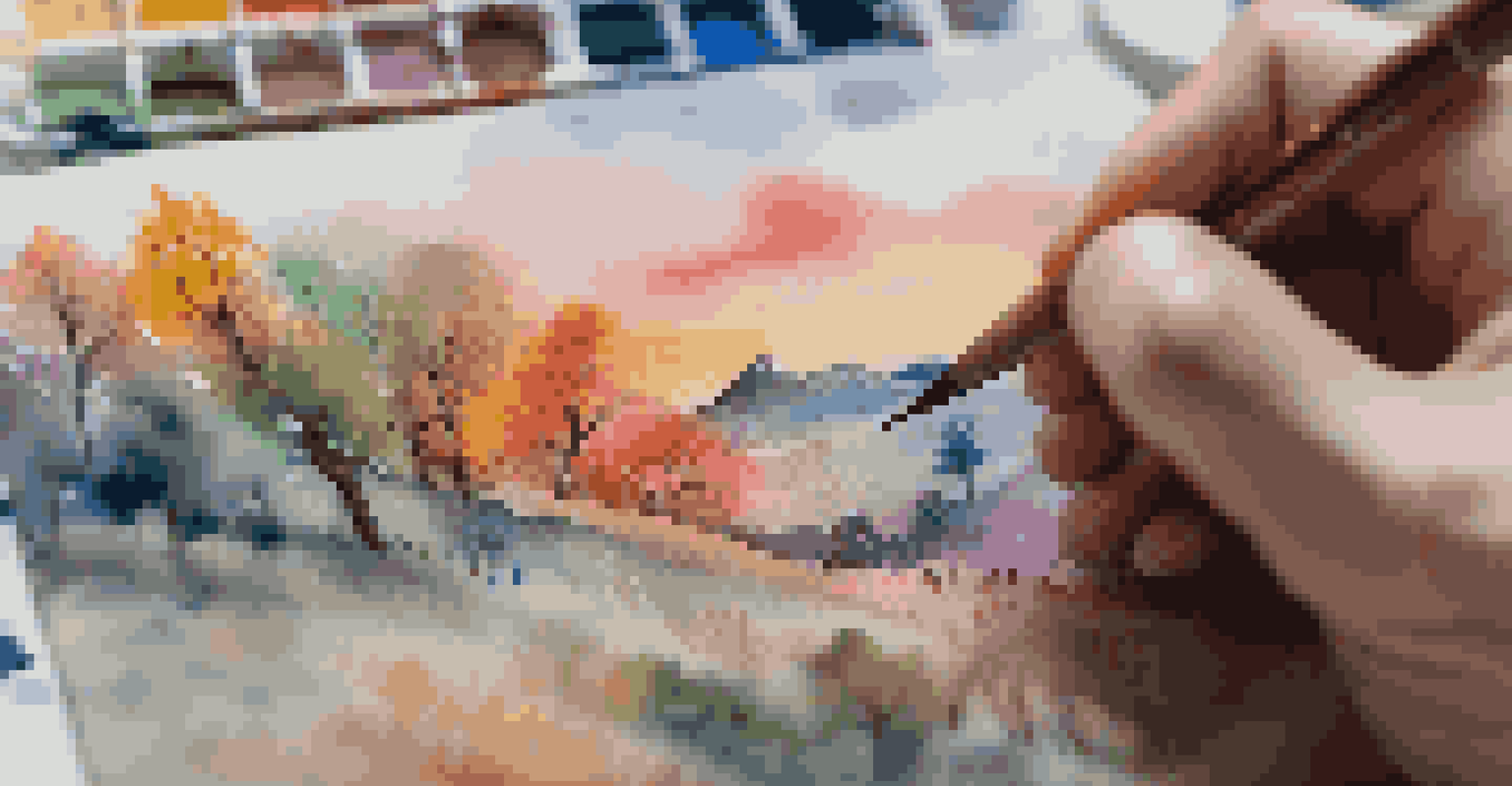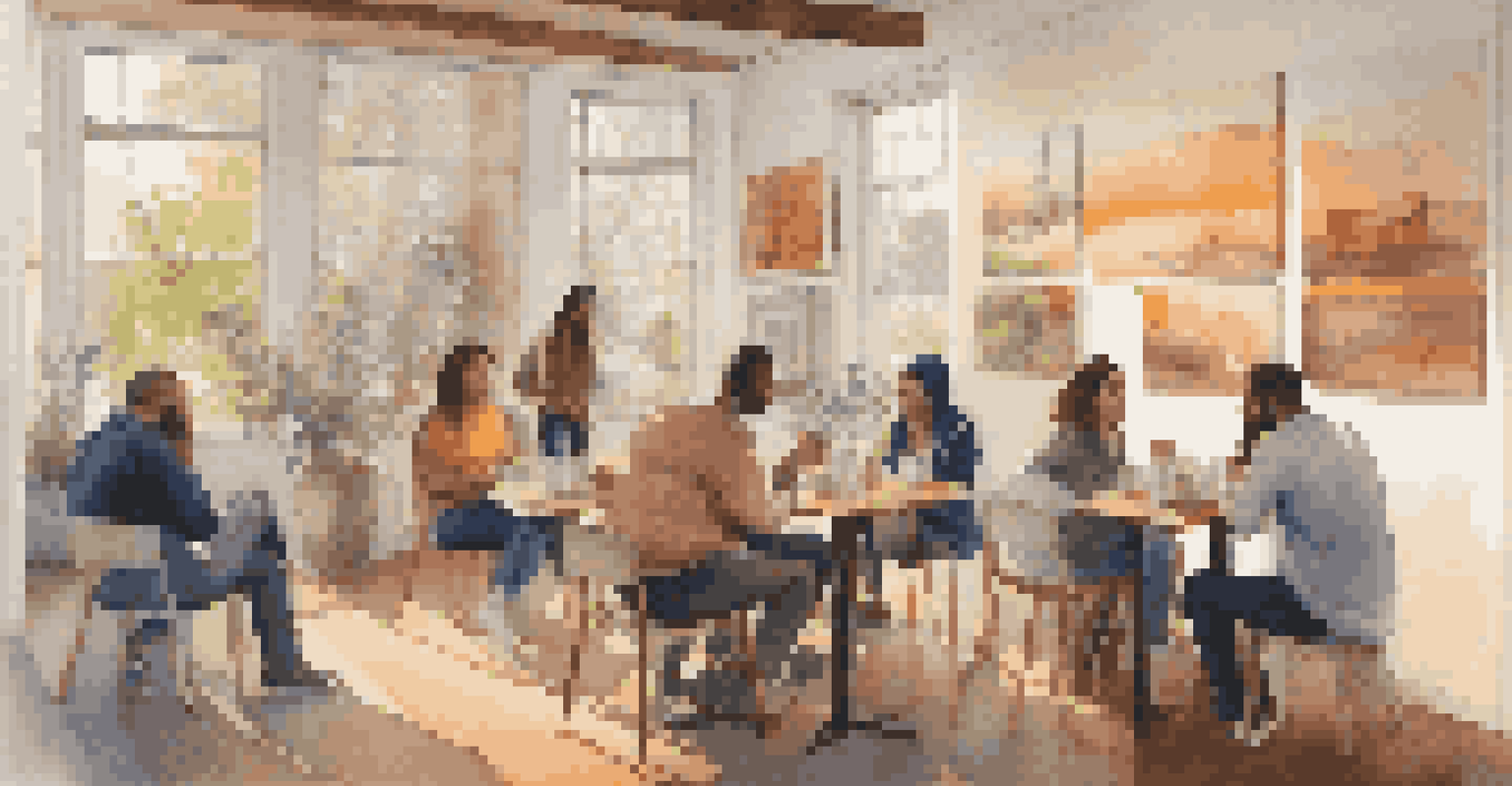Funding Challenges for Emerging Artists in Public Policy Context

Understanding the Importance of Funding for Emerging Artists
Funding is a lifeline for emerging artists, allowing them to create and showcase their work. Without financial support, many talented individuals find it difficult to pursue their artistic visions. This financial backing can come from various sources, including grants, sponsorships, and public funding initiatives.
Artists are not just creators; they are the heart and soul of our communities. Supporting them is essential for a vibrant cultural future.
Emerging artists often face unique challenges compared to established ones, as they lack the recognition and resources that come with a successful career. This disparity highlights the need for targeted funding solutions that cater specifically to their needs. Investing in these artists not only enriches the cultural landscape but also fosters innovation and creativity.
In public policy, understanding the significance of funding for these artists is crucial. Policymakers must recognize that supporting emerging talent can lead to a vibrant arts ecosystem, which can enhance community engagement and economic growth. Therefore, creating supportive funding frameworks is essential for nurturing the next generation of artists.
Common Funding Sources for Emerging Artists
Emerging artists typically rely on a mix of funding sources to sustain their creative endeavors. These can include government grants, private foundations, crowdfunding, and art residencies. Each source comes with its own set of requirements and expectations, which can be daunting for someone just starting out.

Government grants are often the most sought-after option, as they can provide substantial financial support. However, the application process can be highly competitive and bureaucratic, which might discourage many talented individuals from applying. On the other hand, crowdfunding allows artists to connect directly with their audience, but it requires a strong marketing strategy and public engagement.
Funding is Crucial for Artists
Financial support enables emerging artists to pursue their creative visions and contribute to the cultural landscape.
Art residencies offer another avenue for funding, providing artists with a stipend and resources to create their work. These opportunities can also help them build valuable networks within the art community. Ultimately, diversifying funding sources is key for emerging artists to navigate the financial landscape effectively.
Barriers to Accessing Funding for Emerging Artists
Despite the variety of funding sources available, many emerging artists face significant barriers in accessing them. One major challenge is the overwhelming amount of competition for limited grant opportunities. This can make the process feel discouraging, especially for those without prior experience in grant writing.
The arts are not a luxury; they are a necessity for a thriving society. Investing in emerging artists ensures that new voices are heard.
Additionally, some funding sources may have eligibility criteria that exclude certain artists. For instance, specific grants might only be available to artists working within certain mediums or genres, leaving others without options. This can create a sense of inequality in the funding landscape, where only a select few receive the support they need.
Moreover, the lack of awareness about available funding opportunities can further complicate matters. Emerging artists may not know where to look for grants or how to navigate the application process. This highlights the need for better resources and outreach to ensure that all artists have the information they need to secure funding.
The Role of Public Policy in Supporting Artists
Public policy plays a critical role in determining the funding landscape for emerging artists. Policymakers have the power to create frameworks that prioritize arts funding, making it more accessible to those in need. By advocating for increased investment in the arts, they can help ensure that emerging talent receives the support necessary to flourish.
Moreover, policies that promote equity in funding can help level the playing field for artists from diverse backgrounds. This can involve implementing targeted programs aimed at underrepresented communities, thereby enriching the cultural tapestry of society. By addressing disparities in funding access, public policy can help nurture a more inclusive arts ecosystem.
Barriers Limit Funding Access
Competition for grants and restrictive eligibility criteria create significant challenges for many emerging artists seeking funding.
Additionally, public policy can facilitate partnerships between artists and various sectors, including education and business. These collaborations can lead to innovative funding solutions and provide emerging artists with valuable resources and exposure. In this way, public policy can serve as a catalyst for positive change in the arts community.
The Impact of Economic Factors on Funding Availability
Economic conditions significantly influence the availability of funding for emerging artists. During times of economic downturn, arts funding is often one of the first areas to face cuts, as governments and organizations tighten their budgets. This can leave many artists struggling to find the financial support they need to continue their work.
Conversely, in a booming economy, there may be more opportunities for funding as both private and public sectors look to invest in the arts. However, the competition for these funds can become fiercer, making it challenging for emerging artists to stand out. Understanding these economic cycles is crucial for artists looking to navigate the funding landscape.
Moreover, economic factors can also affect public perception of the arts. When the economy is thriving, there is often a greater appreciation for cultural initiatives, leading to increased support for emerging artists. This underscores the importance of fostering a stable economic environment that values and invests in the arts.
The Importance of Networking and Community Support
Networking is a vital component for emerging artists seeking funding opportunities. Building connections within the art community can open doors to collaborations, mentorships, and valuable insights into the funding process. Artists who actively engage with their peers and local arts organizations often find more success in securing financial support.
Community support can also play a significant role in an artist's journey. By fostering a strong local arts culture, communities can create networks that help artists thrive. This can include organizing events, exhibitions, and workshops that promote emerging talent and connect them with potential funders.
Public Policy Shapes Funding
Effective public policies can enhance funding accessibility and promote equity, nurturing a vibrant arts ecosystem.
Moreover, social media has become an essential tool for artists to share their work and connect with audiences. By building an online presence, emerging artists can reach a wider audience and attract potential funding sources. In this way, both networking and community support are crucial for navigating funding challenges.
Future Directions for Funding Emerging Artists
As the landscape of arts funding continues to evolve, emerging artists must adapt and innovate in their approaches to securing support. This could involve exploring new funding models, such as decentralized finance (DeFi) or blockchain-based solutions, which offer alternative pathways to financial backing. Staying informed about these trends can empower artists to tap into emerging opportunities.
Additionally, fostering a culture of collaboration among artists can lead to collective funding initiatives. By pooling resources and sharing strategies, artists can better navigate the challenges of securing funding. This collaborative approach can also create a sense of community and solidarity in the arts sector.

Ultimately, the future of funding for emerging artists will rely on a combination of adaptive strategies, strong community ties, and supportive public policies. By prioritizing these elements, we can work towards a more equitable and vibrant arts landscape that nurtures the next generation of creative talent.